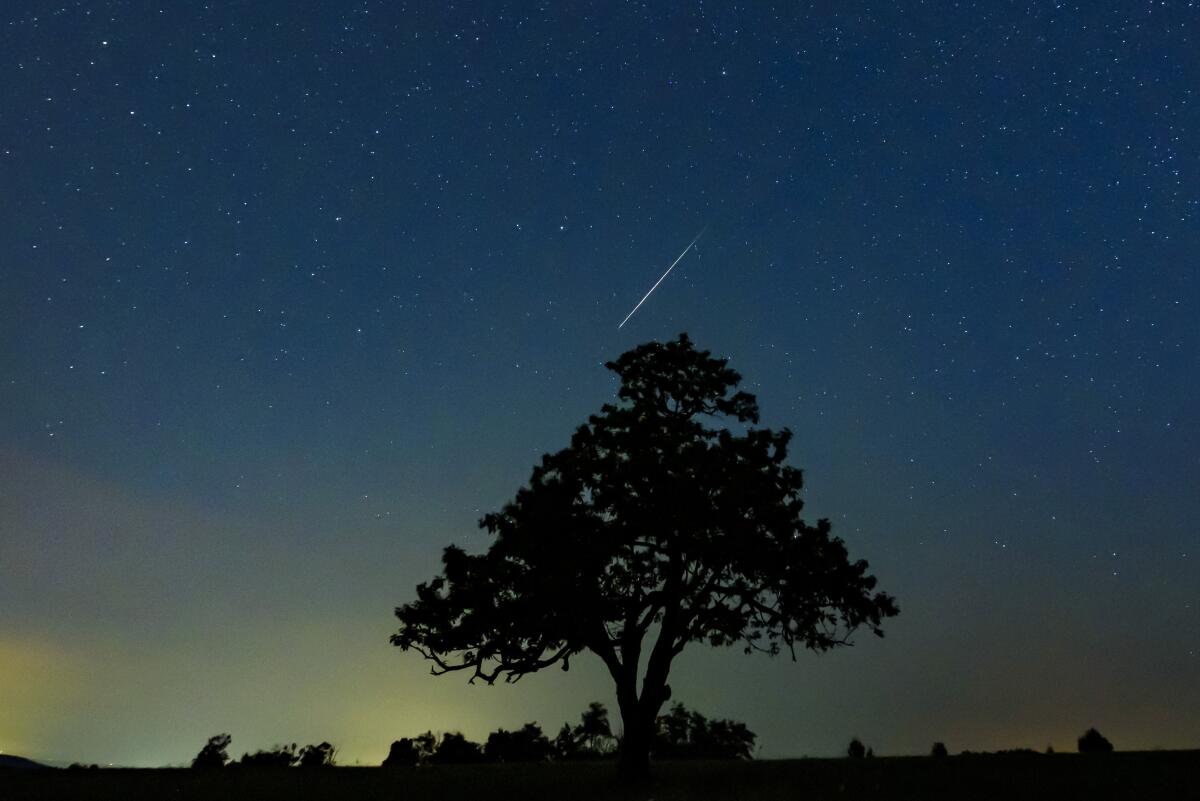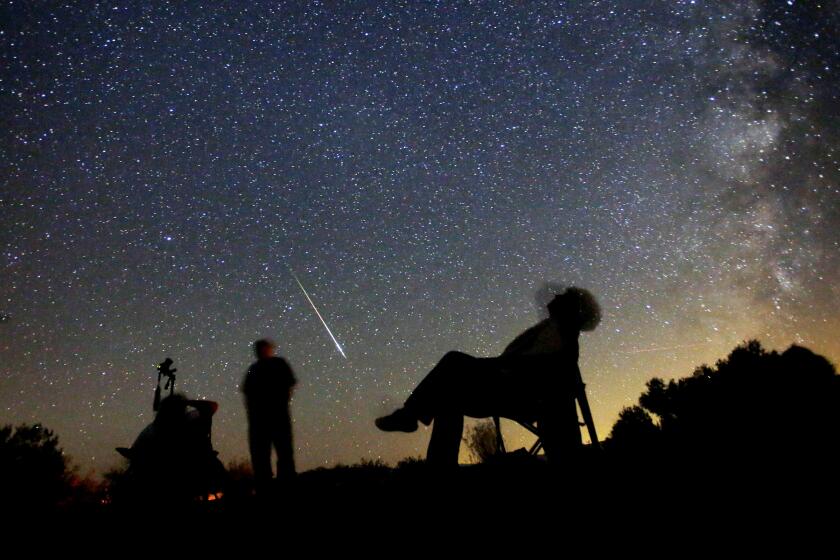The Perseid meteor shower peaks this weekend, and it’s even better this year

- Share via
NEW YORK — The annual Perseid meteor shower reaches its peak this weekend, sending bright trails of light streaking across the night sky.
With only a sliver of moon in the sky, conditions this year will be ideal for seeing lots of meteors.
“If you’ve got nice clear weather and a good dark sky, you go out just before dawn and you’ll see a Perseid per minute or so,” said NASA meteor scientist Bill Cooke. “That’s a pretty good show.”
Here’s how to watch the meteor shower:
The celestial display peaks on Aug. 12 and 13. You’ll have the best chance of seeing the dancing streaks of light under a dark sky, away from light pollution.
What are the Perseids?
The Perseids — one of the biggest meteor showers we can see — occur every year in the late summer. Meteor showers happen when the Earth moves through fields of debris floating around in space.
The Perseids come from comet Swift-Tuttle, a big ball of ice and rock that sheds pieces of dusty debris as it orbits around the sun. When the Earth passes by, those bits get caught in our atmosphere and burn up, creating the streaking lights.
The Perseids get their name from the constellation Perseus, because the meteors’ paths appear to start out from this point in the sky.
When is the shower?
This year’s shower is already active, but the main event will be this weekend, when the shower reaches its peak from Saturday night into Sunday morning.
Starting around 11 p.m. local time Saturday, a few meteors will start to show up — maybe one every 15 minutes, Cooke estimated. They’ll keep picking up the pace until before dawn on Sunday, when “you’ll see meteors appear all over the place,” he said.
How can I see them?
During this weekend’s peak, the moon will be a waning crescent — just a small slice in the sky. That’s good news because a bright moon can make it harder to spot the meteors. Last year, the moon was full during the peak.
Anyone in the Northern Hemisphere will have a good view this year, as long as the sky is clear of light pollution and clouds.
The move to more energy-efficient lighting has had an unintended result: more light escaping into the night sky and causing light pollution even hundreds of miles away.
You don’t need any equipment to see them, but you will need to give your eyes around half an hour to adjust to the dark. Avoid looking at your cellphone since that can ruin your night vision.
The Perseids can appear anywhere in the sky. So just “lie on your back, look away from the moon and take in as much sky as you can,” Cooke said.








